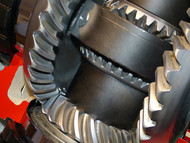What is Differential Fluid and Why Is It Important?
14th May 2021

Have you been told that your vehicle is low on differential fluid? Whether you drive a car, truck or SUV, it may use differential fluid. Neglecting to maintain appropriate levels of differential fluid can take a toll on your vehicle, resulting in increased wear and tear while also paving the way for more costly forms of damage. To learn more about differential fluid and how it works, keep reading.
Overview of Differential Fluid
Also known as gear fluid, differential fluid is a lubricating fluid that's used in manual transmission systems. The gearbox, of course, is the differential. It works in conjunction with your vehicle's driveshaft to turn the wheels so that your vehicle moves while in drive. With the exception of automatic transmissions, most transmissions contain differential fluid.
Manual transmissions contain many different interconnected gears. As these gears rotate, they'll turn on your vehicle's wheels. Because the individual gears touch each other during operation, they are susceptible to friction-related damage. Friction will occur at the junction between two or more gears. Over time, this friction can wear down the gears within a manual transmission, which is why differential fluid is used. Differential fluid is a lubricating fluid that reduces friction within manual transmissions.
How Differential Fluid Works
Differential fluid works like many other lubricating automotive fluids. It flows over and around the individual gears, as well as the rings, to protect them from friction-related damage. Friction can cause damage in several ways. First, it can physically wear away the gears within your vehicle's manual transmission. Second, friction creates heat, which if left unchecked, can cause gear surfaces to warp. Differential fluid protects against friction-related damage such as this by reducing lubricating your vehicle's manual transmission.
Checking Your Vehicle's Differential Fluid
Most automotive transmission systems don't have a dipstick. Therefore, you won't be able to see whether your vehicle is low on differential fluid simply by pulling the dipstick. To check the differential fluid, you'll need to access the filler plug.
The filler plug is typically located on the side of a manual transmission. After removing it, you can look inside to see whether your vehicle is low on differential fluid. For most manual transmissions, the differential fluid should be at or slightly below the filler plug. If it's significantly lower this amount, your vehicle probably needs more differential fluid.

